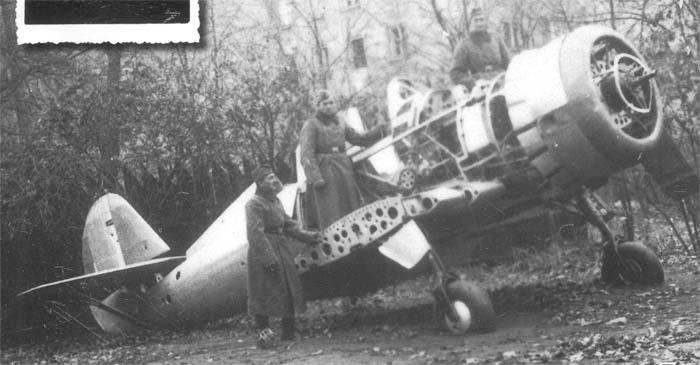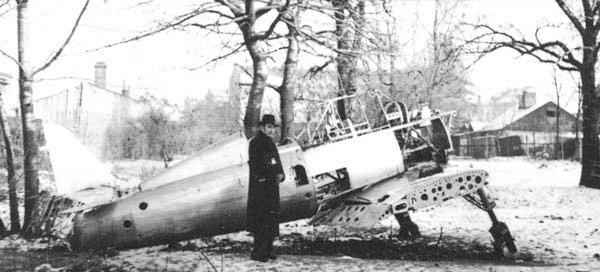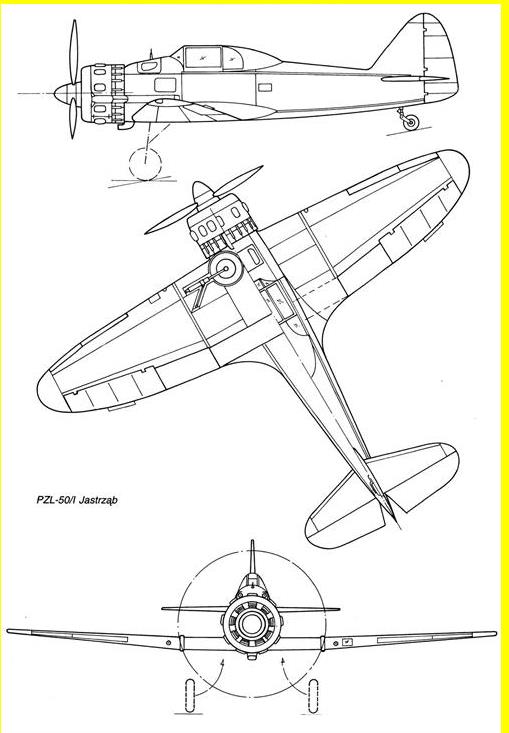| Type |
Single seat fighter |
| Engine |
1 Bristol Mercury VIII with 3-bladed variable pitch propeller |
| Dimensions |
Length 8,0 m , height 2,7 m, span 9,7 m , wing area 15,8 m2 , |
| Weights |
Empty 1900 kg, loaded 2400 kg , max. take off weight |
| Performance |
Max.. speed 430 km/h , cruising speed , range 750 km, endurance , service ceiling 7500 m , climb 12 m/sec. |
| Armament |
Guns: 4 7.92 mm PWU wz.36 machine gunsBombs: 100 kg of bombs |
| Type |
Werk.Nr |
Registration |
History |
|
|
|
|
|
|
|
|
The project PZL.50 (or PZL P.50) and named Jastrząb (Hawk), started in late 1936. The design was accepted by the Air Force Command in 1937 and two prototypes were ordered. In June 1938, 300 Mercury VIII engines were also ordered for the PZL, the first to be delivered in June 1939. The engine for the prototype was imported from Great Britain and fitted in September 1938. The prototype was almost ready by October, but its completion was delayed by the lack of a retractable landing gear, delivered by the British Dowty firm. Due to the delay, the Polish aviation authorities missed the chance of starting flying tests with some temporary fixed landing gear, since Polish industry had not yet produced suitable retractable gears. Avia-manufactured undercarriage units were specified for the production series.
Finally, the first prototype PZL.50/I was completed and flown in late February 1939 by pilot Jerzy Widawski. Despite being officially classified as a secret, on 27 February it was on static display for the Italian Foreign Minister, Count Galeazzo Ciano. Tests were carried out mainly by Bolesław Orliński and several other pilots who noted that the prototype, after modifications to the tail, exhibited satisfactory handling and maneuverability characteristics although it was not agile enough as an interceptor.[6] The greatest concern was that even without radio and machine guns, it was able to achieve only 420 to 430 km/h . The Mercury VIII engine had problems with delivering full power due to an unsuitable carburetor intake and, after modifications, the prototype was able to reach 442 km/h . Test pilots continued to complain about power output being too low,[1] although with a better engine, some observers estimated that a production example would have been able to top 470 km/h
It was first planned to order 300 P.50s, but in April 1939, the new Air Force Commander Gen. Kalkus and Air Defence Inspector Gen. Józef Zając estimated that the current PZL.50 design did not meet its specified performance goals and ordered PZL to develop it further, building an improved pattern aircraft with only a limited series of 25-30 aircraft on order, designated the P.50A. Production aircraft were to have the wing area increased from 15.8 m2 to 19 m2. The total planned order was decreased to 200 and Poland started to look for fighters abroad, ordering 160 Morane-Saulnier MS 406 fighters from France.[9] As an interim measure, 100 PZL P.11g Kobuz fighters were ordered, fitting the P.11c airframe with Mercury VIII engines.
The second prototype PZL.50/II was to be equipped with a more powerful 1,200-1,400 hp engine, but never was. Only in 1939, was the PZL.50/II reworked with a 1,100 hp Gnome-Rhône 14N21 for an export variant P.50B (estimated maximum speed 560 km/h or 1,150 hp Bristol Taurus III or IV for the Polish Air Force (estimated speed 530 to 560 km/h (330 to 350 mph)). The Gnome-Rhone engine was only delivered in August 1939, while the newest British Taurus was scheduled to be delivered in October or November, but final deliveries were prevented by war. Nonetheless, Taurus development had proved to be troublesome. Other possible engine alternatives were the Polish PZL Waran engine, which was to be ready in spring 1940, the 1,000 hp Pratt & Whitney Twin Wasp or 1,375 hp Bristol Hercules. As early as 1938, Jakimiuk proposed a variant with the 1,100 hp Hispano-Suiza 12Y inline engine, designated PZL.56 Kania, but it was not accepted.
By the end of August 1939, the first unarmed flying prototype PZL.50/I, the second incomplete and engine-less prototype PZL.50/II, an incomplete preliminary PZL.50. and parts of four PZL.50As were all that was completed. The first prototype had a short fairing behind the canopy, all the others were distinguished by having a cut down rear fuselage to accommodate an "all-round vision hood".[5] The production series would have incorporated a different canopy and a ventral fuselage fairing. After the German invasion and outbreak of World War II, on 2–3 September 1939, two incomplete aircraft (pattern PZL.50 and PZL.50/II) were moved from the WP-1 factory in Warsaw to car workshops at Czerniakowska Street in Warsaw, where they were captured by the Germans, and possibly scrapped after 1940.





